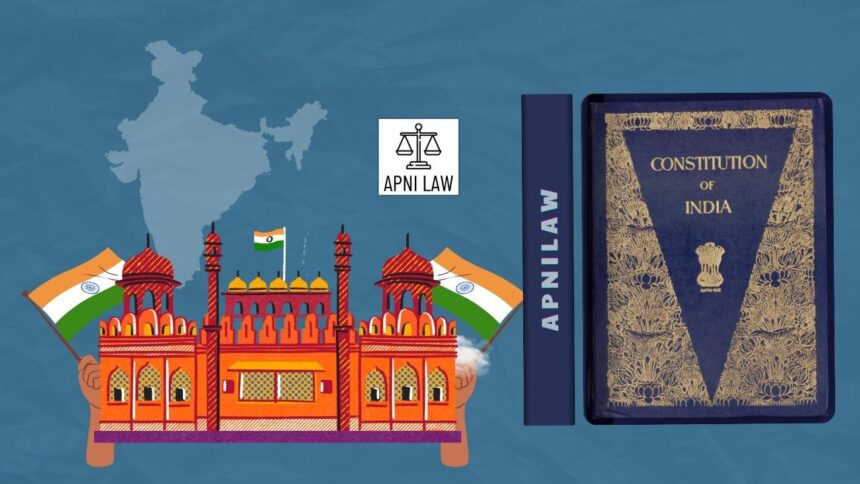Introduction
The introduction of the Goods and Services Tax (GST) in 2017 marked a revolutionary change in India’s indirect tax system. It replaced a complicated network of central and state taxes with a single, unified tax structure. At the heart of this system lies the GST Council, established under Article 279A of the Indian Constitution. This constitutional body acts as the backbone of GST governance, ensuring cooperation between the Union and State governments in shaping tax policies, resolving disputes, and maintaining a smooth tax regime across the country. The GST Council is often described as a symbol of India’s cooperative federalism, where both levels of government work together to create harmony in fiscal administration.
Origin and Constitutional Basis
The 101st Constitutional Amendment Act, 2016 introduced Article 279A, which created the GST Council. The main goal of this body is to bring uniformity in tax rates and structure across India. The Council was officially formed on September 15, 2016, and began functioning from July 1, 2017, the day GST was implemented.
Article 279A states that the President of India must constitute the GST Council within 60 days of the commencement of the amendment. The Council brings together representatives from both the Centre and the States, ensuring that tax decisions reflect the interests of all stakeholders.
Composition of the GST Council
The GST Council is headed by the Union Finance Minister, who serves as its Chairperson. The Union Minister of State for Finance or Revenue acts as a member, while each State nominates the Finance Minister or another minister in charge of finance as its representative.
Every decision made by the Council requires consensus. The Centre holds one-third of the total voting power, while States collectively hold two-thirds. This balance ensures that both levels of government have an equal voice in shaping India’s tax policy, maintaining a cooperative relationship rather than a hierarchical one.
Powers and Functions of the GST Council
Under Article 279A(4), the GST Council recommends crucial aspects of India’s tax framework. It decides the tax rates, exemptions, threshold limits, and model GST laws. It also recommends principles for levying GST on interstate trade, which includes the Integrated GST (IGST).
The Council resolves disputes between the Centre and States and addresses issues related to revenue sharing and compensation. It also monitors the efficiency of GST implementation and recommends procedural improvements, such as e-invoicing, return filing systems, and compliance rules.
In addition to tax rates, the Council works to expand the GST base while maintaining stability for businesses. Its decisions affect sectors ranging from real estate to agriculture, making it one of the most powerful fiscal bodies in India’s governance structure.
Meetings and Decision-Making Process
The GST Council meets regularly, with sessions often attracting national attention due to their direct impact on businesses and consumers. Every meeting focuses on balancing state revenues and consumer interests. Decisions are taken through voting if consensus cannot be reached.
Each decision requires at least 75% of the weighted votes to be approved. The Centre’s one-third vote share and the States’ collective two-thirds share make it necessary for both sides to collaborate. This process reinforces fiscal federalism, ensuring that neither the Centre nor the States dominate policy-making.
Importance of the GST Council
The GST Council is one of India’s most significant experiments in cooperative federalism. Before GST, states levied their own taxes like VAT, entry tax, and octroi, which created barriers to inter-state trade. The Council eliminated such hurdles by bringing all taxes under a single umbrella.
It ensures that small businesses and larger corporations operate under uniform tax rules. Moreover, the Council adapts tax rates in response to economic conditions. For example, it reduced GST on essential goods during the pandemic to ease the financial burden on citizens. This responsiveness has made the Council an effective mechanism for real-time fiscal coordination.
Challenges Before the GST Council
Despite its success, the Council faces several challenges. One of the main concerns is revenue sharing between the Centre and States. Many states argue that compensation for revenue losses after GST implementation has been delayed, which affects their budgets.
Another challenge lies in the frequent rate changes, which create uncertainty for businesses. Achieving consensus among 31 members with different political and economic priorities is also a demanding task. Moreover, technical issues in GST return filing and compliance continue to affect small enterprises.
However, the Council continues to evolve, refining its structure and procedures to improve efficiency. Its flexibility and commitment to collaboration have helped maintain economic stability in a diverse federation like India.
Role in Promoting Cooperative Federalism
The GST Council stands as a living example of cooperative federalism in practice. Unlike earlier financial mechanisms dominated by the Centre, the Council ensures that both levels of government jointly make decisions. Every major fiscal reform under GST — such as rate rationalization or digital compliance systems — results from collective deliberation rather than unilateral action.
This cooperative approach strengthens national unity while respecting regional autonomy. States feel empowered to voice their concerns, while the Centre ensures national consistency in tax policy. The Council’s working model has inspired discussions about similar collaborative mechanisms in other policy areas like health and education.
FAQ Section
1. What is the purpose of the GST Council under Article 279A?
The GST Council ensures uniformity in India’s indirect tax system. It decides tax rates, exemptions, and rules to maintain coordination between the Centre and the States.
2. Who heads the GST Council?
The Union Finance Minister serves as the Chairperson of the GST Council, with the Minister of State for Finance and State Finance Ministers as other members.
3. How are decisions taken in the GST Council?
Decisions require at least 75% approval through a weighted voting system — one-third votes for the Centre and two-thirds collectively for the States.
Conclusion
The GST Council, established under Article 279A, represents a milestone in India’s fiscal governance. It brought unity to the country’s complex taxation system and strengthened the spirit of federal cooperation. While challenges remain in rate rationalization and compensation, the Council continues to serve as a bridge between the Centre and the States.
By ensuring that both levels of government share responsibility in shaping tax policy, the GST Council stands as a successful model of dialogue, collaboration, and fiscal harmony. Its continued evolution will play a defining role in India’s journey toward transparent and efficient tax governance.







